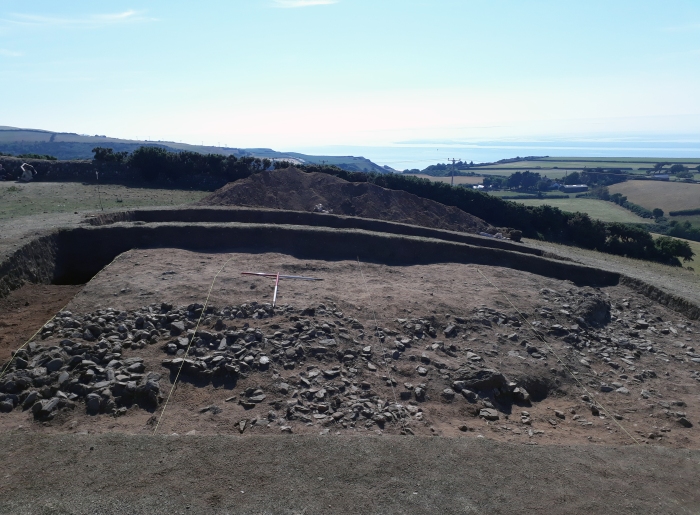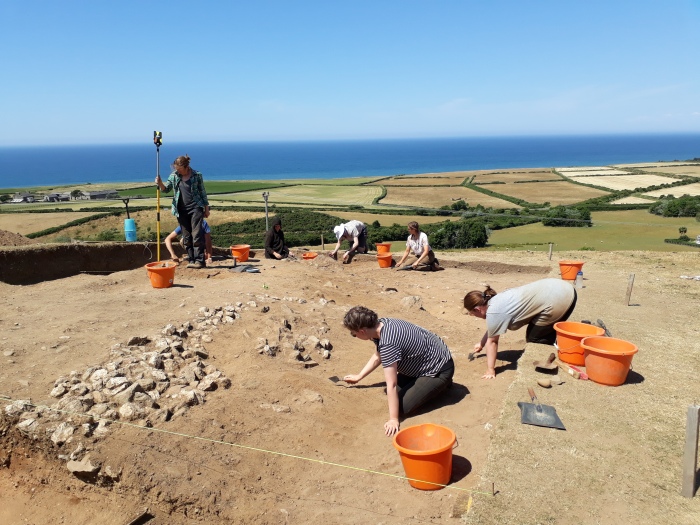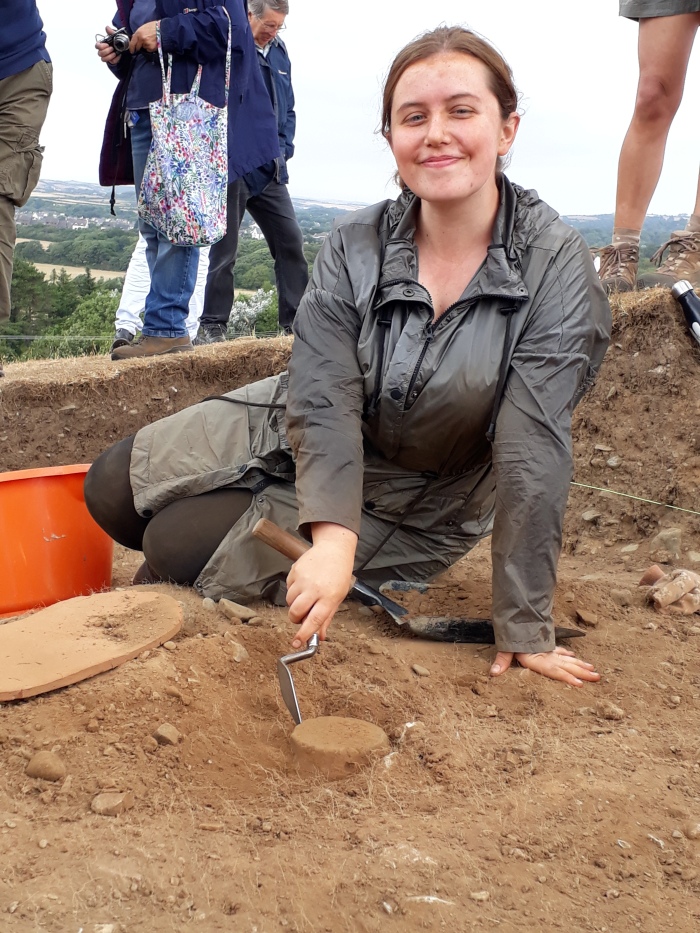Author: Rachel
Having spent the previous two blogs summarising the understanding we now have of the site after two years of excavation this blog entry is going to summarise some of the things that we still do not know i.e. the questions we have going into the third season of excavation.
One of the biggest questions for us is whether the mound has a similar shape and construction in the un-excavated areas. We have only excavated about a third of the mound to date, so at present we do not know whether the rest of the mound has the same history of construction as the third we have opened, nor do we know, in detail, the shape of the mound in the un-excavated areas (though the geophysics gives us a reasonable idea).

Connected to this are three key questions about construction and form:
- Excavation in 2018 revealed two phases of earthen mound construction. The initial phase appears to be a smaller mound which was then added two with a second phase to produce a bigger mound – we want to confirm whether this is the case more broadly by continuing the excavation to the south and west. In the long run we will also want to see if radiocarbon dating can reveal the timing of these events
- Excavation also revealed the differential form of the mound and the presence of what appears to be turf in patches between the two mound construction episodes, we want to know if this extends more widely but we also want to see whether soil analysis can reveal whether this discontinuous layer of turn represents turf growth of a layer of deposited turf
- Excavation in 2017 and 2018 revealed evidence for a ring-cairn [LINK]. This was slightly differentially preserved across the currently excavated area. We want to know whether there is a ring-cairn around the whole perimeter of the mound and what state of preservation it is in elsewhere.
- Linked to this we have discovered three large stone slabs in the excavated portion of the mound around the edge, we need to excavate further to see if these are part of a larger kerb that surrounds the mound or whether these are not seen elsewhere around the mound perimeter.

To date we have uncovered 5 burials on the site, only one of which has had osteological analysis. We have lots of questions about the other 4 that can only be answered through osteological assessment. Similarly, we look forward to trying to get radiocarbon dates for each burial.
This of course raises the question of whether we will find other burials. To date we have found burials below the mound layers, in the mound layers, cut into the top of the mound, and placed within the ring-cairn. Of course, one of the things we are most excited to learn, is whether this mound was used as a burial site for other people too.

To date we have produced a large number of finds – we have lots of questions about these which only specialist analysis will be able to answer – we are planning to have these analyses completed once the excavation of the mound is complete.
This season we found a small area of features that we believe date to the Ronaldsway Late Neolithic underneath the mound. One of the questions we have for this year is whether we will find more of these features preserved under the mound as we open new trenches. We would also like some radiocarbon dates to support the interpretation of these features as Late Neolithic in date.
As you can see we still have lots of questions about the mound! We will be back this summer to learn more, so keep your eyes on the blog over the coming weeks if you would like to be involved in the excavation or come to see the dig in action.
One thought on “What we don’t know after two years of digging”